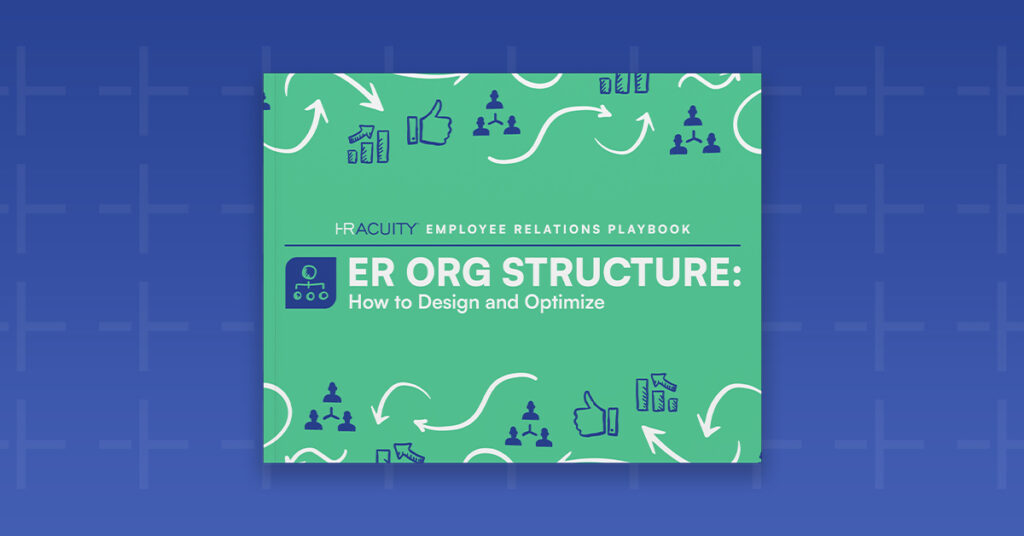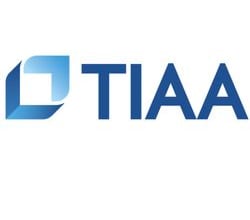TL;DR: Key Takeaways from the Employee Relations Playbook
-
A clear ER value statement aligns leadership and scopes team focus.
-
Structuring your ER team depends on culture, compliance risk and business priorities.
-
Use a RACI model to define ownership across HR, legal and ethics.
-
Technology enables consistency at scale — especially for investigations.
-
High-performing ER teams combine legal rigor with emotional intelligence.
ER Org Structure: How to Design and Optimize
Every company’s ER structure is different—because every culture, risk profile and leadership style is different. But the best-performing teams share one trait: they align on scope, clarify responsibilities and stay agile in the face of change.
This playbook distills hard-won lessons from HR Acuity’s community of employee relations (ER) leaders to help you design a structure that fits your organization’s scale, risk and goals.
What Is an ER Org Structure?
An Employee Relations (ER) org structure defines how your company scopes, staffs and governs ER responsibilities across functions. It determines who investigates what, how cases are routed and which data flows into leadership dashboards.
Without a clear structure, ER becomes reactive firefighting. With one, it becomes a strategic function that drives culture and compliance.
What Do We Mean by “ER Org Structure”?
Your ER org structure defines how your company scopes, staffs and governs employee relations. It covers:
-
What your ER team owns (and what it doesn’t)
-
How roles and processes are divided with HRBPs, Legal, Compliance and others
-
Whether ER is centralized, distributed or consultative
-
The skill sets, processes and tools you need for consistency and fairness
Step 1: Define Your ER Value Statement and Scope
Start with why your ER team exists — and what it adds to the business. Your value statement should address:
-
How ER drives integrity and fairness
-
Where you create consistency (e.g., investigations, policy enforcement)
-
Where flexibility is allowed (e.g., manager coaching, nuance in case types)
-
What metrics you’ll use to show effectiveness (e.g., case resolution times, repeat incidents)
Then define your scope:
-
Does ER own performance management?
-
What types of investigations fall under ER vs. HRBP or Legal?
-
Who handles conflict resolution, accommodations, labor relations?
Step 2: Align on Philosophy — Advocate vs. Neutral
Before designing your structure, align on these questions:
-
Is your ER team a neutral body, or also an employee advocate?
-
Will you handle both compliance risk and employee engagement?
-
Do you include DE&I accountability or partner with another team?
This philosophy shapes your reporting lines, stakeholder relationships and team design.
Step 3: Secure Internal Support (And Speak Their Language)
Whether building from scratch or restructuring, align with key stakeholders: HRBPs, Legal, DE&I, People Leaders, Security — even the Board.
Use a service mindset: Show how ER helps them hit their goals. That early partnership smooths buy-in and reduces friction later.
Step 4: Choose the Right Structure (Centralized, Decentralized or Consultative)
Here’s how top orgs structure their ER teams:
Centralized (Most Common – 56% of Orgs)
-
Single team reporting into ER leadership (not HRBPs)
-
Drives consistency, neutrality, and efficient case handling
-
Best for regulated industries or global orgs needing scale
Decentralized (Least Common – 7%)
-
ER work owned by HR generalists in business units
-
Offers local context but leads to inconsistency and risk
-
HR Acuity does not recommend this model
Consultative / Mixed
-
ER team advises HRBPs or People Leaders, doesn’t execute all work
-
Works well in small orgs or where local regulations require nuance
-
Risk: outcome ownership is diffused
Step 5: Design the Right Roles (And Room for Growth)
A sustainable ER org includes a mix of:
-
Intake/triage roles for front-line support
-
ER consultants/investigators for complex cases
-
Case managers to monitor workloads and SLAs
-
Operations roles to own policy, analytics, and systems
Bonus: Cross-training HRBPs in investigations can boost ER alignment and org-wide ER maturity.
Step 6: Match Tools to Your Structure
Manual tools (email, Excel) introduce risk. Centralized teams need:
-
Case management software (like HR Acuity)
-
Guided workflows for investigations
-
Role-based access for confidentiality
-
Dashboards and analytics to detect patterns
-
Integration with HRIS and DE&I systems
Pro tip: Start with basic intake → move to analytics → then trend prediction.
📊 Real-World Models From Leading Companies
From tech to telecom to financial services, HR Acuity’s roundtable participants use variations of the centralized COE model:
-
ER-to-employee ratio: 1:1,000–1:1,500
-
Teams include: Investigators, consultants, intake analysts and ops leads
-
Reporting lines: Often report to Legal, Risk, DE&I or directly to the CHRO




